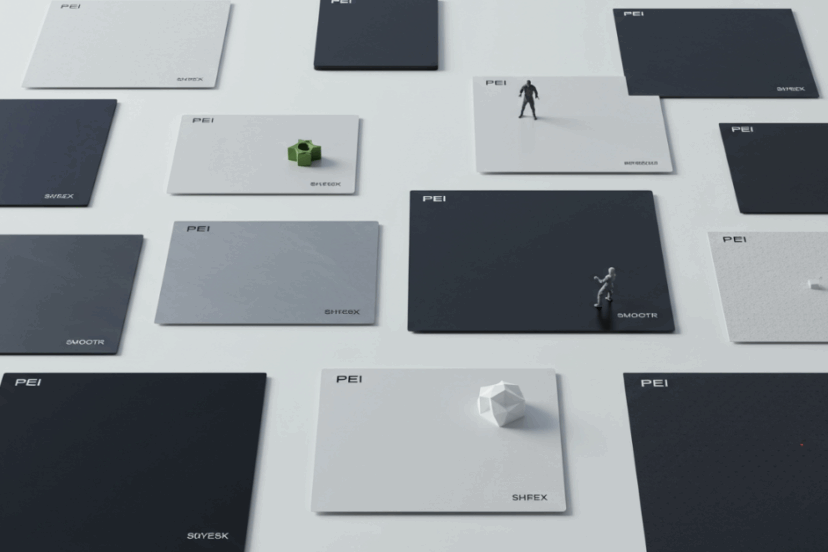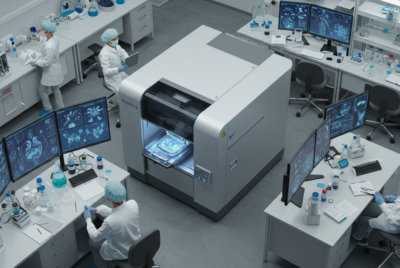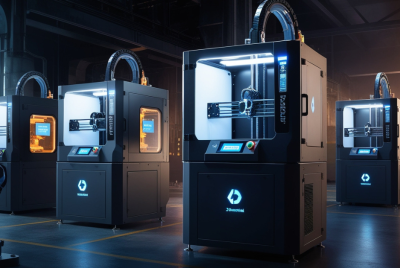Top 10 PEI Build Surfaces for 3D Printers: Best Picks for Flawless First Layers
Ever struggled with a 3D print that just won’t stick to the bed? Or maybe you’ve spent hours prying off a print only to damage it? If this sounds familiar, let me introduce you to PEI build surfaces—the unsung heroes of 3D printing. These thin, durable sheets are like the perfect dance partner for your filament, ensuring flawless first layers and easy print removal. Whether you’re printing PLA, PETG, or even tricky ABS, a good PEI surface can make or break your project. In this guide, I’ll walk you through the top 10 PEI build surfaces for 3D printers, so you can print like a pro. Ready to dive in?
What Makes PEI Build Surfaces So Special?
PEI, or Polyetherimide, is a high-performance thermoplastic that’s practically made for 3D printing. Why? It’s like the Goldilocks of build surfaces—not too sticky, not too slick, but just right. PEI offers excellent adhesion when the bed is heated, gripping your print firmly to prevent warping. Once the bed cools, prints pop off with minimal effort. Plus, it’s heat-resistant, durable, and works with a wide range of filaments. Think of it as a trusty sidekick that simplifies your printing life. But with so many options out there, how do you pick the best one?
How to Choose the Perfect PEI Build Surface
Before we get to the top 10, let’s talk about what to look for. Choosing a PEI surface is like picking the right pair of shoes—it needs to fit your printer and your printing style. Here are some key factors:
- Texture: Smooth PEI gives glossy finishes, while textured or powder-coated surfaces offer better grip and a pebbled look.
- Size: Ensure the sheet matches your printer’s bed size (e.g., 235x235mm for an Ender 3).
- Flexibility: Magnetic or spring steel PEI sheets are removable and flexible for easy print removal.
- Compatibility: Check if it works with your filament types and bed temperature.
- Durability: Thicker sheets (e.g., 1mm) last longer but may need adhesive.
Got a specific printer or filament in mind? Keep these in mind as we explore the best PEI surfaces.
Top 10 PEI Build Surfaces for 3D Printers
Here’s the moment you’ve been waiting for—the top 10 PEI build surfaces that’ll elevate your 3D printing game. These are products from trusted brands, complete with pros and cons.
1. HICTOP Flexible Steel PEI Sheet
- Price: ~$30
- Size: 235x235mm (fits Ender 3, others available)
- Description: This magnetic, flexible steel sheet with a smooth PEI surface is a favorite for its ease of use. Prints stick well during printing and release effortlessly after cooling.
- Pros: Great adhesion for PLA and PETG, easy to install, durable.
- Cons: Smooth surface may wear faster than textured options.
2. Creality Removable PEI Magnetic Bed
- Price: ~$25
- Size: 235x235mm
- Description: Designed for Creality printers like the Ender 3, this magnetic PEI sheet is a breeze to install and remove. It’s smooth and reliable for most filaments.
- Pros: Affordable, perfect fit for Creality beds, good adhesion.
- Cons: May need occasional cleaning to maintain grip.
3. Gizmo Dorks PEI Sheet (1mm)
- Price: ~$40
- Size: Multiple sizes (e.g., 305x305mm)
- Description: A thick, non-flexible PEI sheet that can be cut to size. Ideal for printers without magnetic beds, it uses 3M adhesive for a semi-permanent setup.
- Pros: Highly durable, versatile sizing, excellent for ABS.
- Cons: Installation is trickier, not flexible.
4. BuildTak PEI Film
- Price: ~$35
- Size: 254x254mm
- Description: This thin PEI film sticks directly to your existing bed. It’s smooth and works well for PLA and TPU, with minimal maintenance.
- Pros: Easy to apply, low maintenance, good adhesion.
- Cons: Less durable than thicker sheets, adhesive can wear out.
5. Prusa Textured PEI Powder-Coated Sheet
- Price: ~$50
- Size: 250x210mm (for Prusa MK3S)
- Description: A premium, double-sided textured PEI sheet that gives prints a unique pebbled finish. It’s magnetic and flexible for easy removal.
- Pros: Excellent grip, durable, stylish finish.
- Cons: Pricey, specific to Prusa printers.
6. Fabreeko Honeybadger Dual-Coated PEI Sheet
- Price: ~$45
- Size: 310x310mm
- Description: A dual-sided sheet with smooth and textured PEI options. It’s flexible and magnetic, perfect for ABS and PETG.
- Pros: Versatile, high adhesion, durable.
- Cons: Higher cost, may need Z-offset tweaking.
7. Elegoo PEI Magnetic Platform
- Price: ~$28
- Size: 235x235mm
- Description: Tailored for Elegoo printers, this flexible PEI sheet offers strong adhesion and easy print removal. It’s a budget-friendly option.
- Pros: Affordable, reliable, easy to use.
- Cons: Limited size options, smooth surface wears over time.
8. Sovol Flexible PEI Build Plate
- Price: ~$32
- Size: 310x310mm
- Description: A magnetic, flexible steel sheet with a smooth PEI coating. It’s great for larger printers and works well with PLA and TPU.
- Pros: Large size, good adhesion, flexible.
- Cons: Smooth surface may need frequent cleaning.
9. Anycubic PEI Spring Steel Sheet
- Price: ~$35
- Size: 257x228mm
- Description: Designed for Anycubic printers, this flexible PEI sheet is powder-coated for extra grip. It’s ideal for PETG and ABS.
- Pros: Textured for better adhesion, durable, easy removal.
- Cons: Slightly pricier, specific to Anycubic beds.
10. Wham Bam PEX Build Plate
- Price: ~$50
- Size: 235x235mm
- Description: A high-temp PEX surface (similar to PEI) that’s flexible and magnetic. It’s designed for high-temperature filaments like PETG and ABS.
- Pros: High heat resistance, great adhesion, durable.
- Cons: Expensive, PEX may not suit all filaments.
How to Install a PEI Build Surface
Installing a PEI surface is like setting up a new phone—it’s exciting but needs a bit of care. Here’s a quick guide:
- Clean the Bed: Wipe your printer’s bed with isopropyl alcohol (IPA) to remove dust and grease.
- Apply Adhesive (if needed): For non-magnetic sheets like Gizmo Dorks, apply 3M 468MP adhesive carefully.
- Attach the Sheet: For magnetic sheets, stick the magnetic base to the bed, then place the PEI sheet on top.
- Level the Bed: Adjust your Z-offset slightly, as PEI sheets are thinner than glass.
- Test Print: Run a small test print to ensure proper adhesion.
Pro tip: Double-check alignment to avoid air bubbles or misalignment.
Maintaining Your PEI Build Surface
A PEI surface is like a non-stick pan—it works best when you treat it right. To keep it in top shape:
- Clean Regularly: Wipe with 70-91% IPA every 5-10 prints to remove residue. Avoid acetone, as it can strip PEI.
- Handle with Care: Use plastic scrapers to remove prints to avoid scratches.
- Refresh if Needed: If adhesion weakens, lightly sand with 2000-grit sandpaper to restore grip.
- Store Properly: Keep flexible sheets flat to prevent warping.
With proper care, a good PEI sheet can last for hundreds of prints.
Filament Compatibility: What Works Best with PEI?
PEI surfaces are like the Swiss Army knife of build plates—they handle most filaments with ease. Here’s a quick rundown:
- PLA: Sticks well to smooth or textured PEI without adhesives.
- PETG: Great adhesion, but use a release agent (e.g., glue stick) on smooth PEI to prevent damage.
- ABS: Loves PEI, especially textured surfaces, but may need hairspray for smooth sheets.
- TPU: Works well on smooth PEI with low bed heat.
- Nylon: Better suited for Garolite, but PEI can work with glue stick.
Always check your filament’s recommended bed temperature to avoid bonding issues.
Common Mistakes to Avoid with PEI Surfaces
Even the best PEI surface can trip you up if you’re not careful. Here are some pitfalls to dodge:
- Incorrect Z-Offset: Too low, and you’ll damage the surface; too high, and prints won’t stick.
- Skipping Cleaning: Residue buildup reduces adhesion, so don’t skip the IPA wipe.
- Using Acetone: It’s tempting, but acetone can ruin PEI. Stick to IPA or soapy water.
- Prying Prints Too Soon: Let the bed cool completely for easy removal.
- Ignoring Filament Needs: PETG and ABS can bond too strongly to smooth PEI without a release agent.
Avoid these, and your PEI surface will be your printing BFF.
Why Textured vs. Smooth PEI Matters
Wondering whether to go smooth or textured? It’s like choosing between a glossy or matte phone case—it depends on your vibe. Smooth PEI gives a shiny, professional finish but wears faster and can be too sticky for PETG. Textured or powder-coated PEI offers better grip, a unique pebbled look, and longer durability but may be harder to clean. For versatility, consider a double-sided sheet like the Fabreeko Honeybadger.
The Cost-Benefit of PEI Surfaces
PEI surfaces aren’t the cheapest, but they’re worth every penny. Compared to glass (which needs adhesives) or BuildTak (which wears out faster), PEI strikes a balance between cost and performance. A $30-$50 sheet can last years with proper care, saving you from the headache of failed prints. Plus, the time you save on print removal? Priceless.
Where to Buy PEI Build Surfaces
Ready to upgrade? You can find PEI sheets on:
- Amazon: Wide selection, fast shipping (e.g., HICTOP, Creality).
- MatterHackers: High-quality options like BuildTak PEI.
- AliExpress: Budget-friendly sheets, but check reviews.
- Manufacturer Sites: Prusa, Elegoo, and Anycubic offer tailored sheets.
Always read reviews to ensure compatibility with your printer.
Conclusion: Elevate Your 3D Printing with PEI
PEI build surfaces are like the secret sauce for flawless 3D prints. They offer unbeatable adhesion, easy removal, and versatility across filaments, making them a must-have for any 3D printing enthusiast. From the budget-friendly Elegoo PEI Platform to the premium Prusa Textured Sheet, there’s a PEI surface for every printer and project. So, why settle for warped prints or sticky messes? Pick one of these top 10 PEI build surfaces, follow our installation and maintenance tips, and watch your prints come out perfect every time. Got a favorite PEI sheet or a question? Drop it in the comments, and let’s keep the printing party going!
FAQs
- What’s the best PEI surface for PETG printing?
Textured PEI sheets, like the Prusa Textured Sheet, are ideal for PETG. They provide strong adhesion without bonding too tightly, and a release agent like glue stick can help. - Can I cut a PEI sheet to fit my printer?
Yes! Thicker sheets like the Gizmo Dorks 1mm PEI can be cut with a hobby knife or scissors to match your bed size. - How often should I clean my PEI surface?
Wipe it with 70-91% isopropyl alcohol every 5-10 prints to maintain adhesion. For stubborn residue, use warm soapy water. - Why do my prints stick too well to smooth PEI?
This is common with PETG or ABS. Use a release agent like hairspray or glue stick, and ensure the bed cools completely before removal. - Are PEI surfaces worth the cost?
Absolutely! They’re durable, versatile, and save time on print removal, making them a cost-effective upgrade compared to glass or tape.




